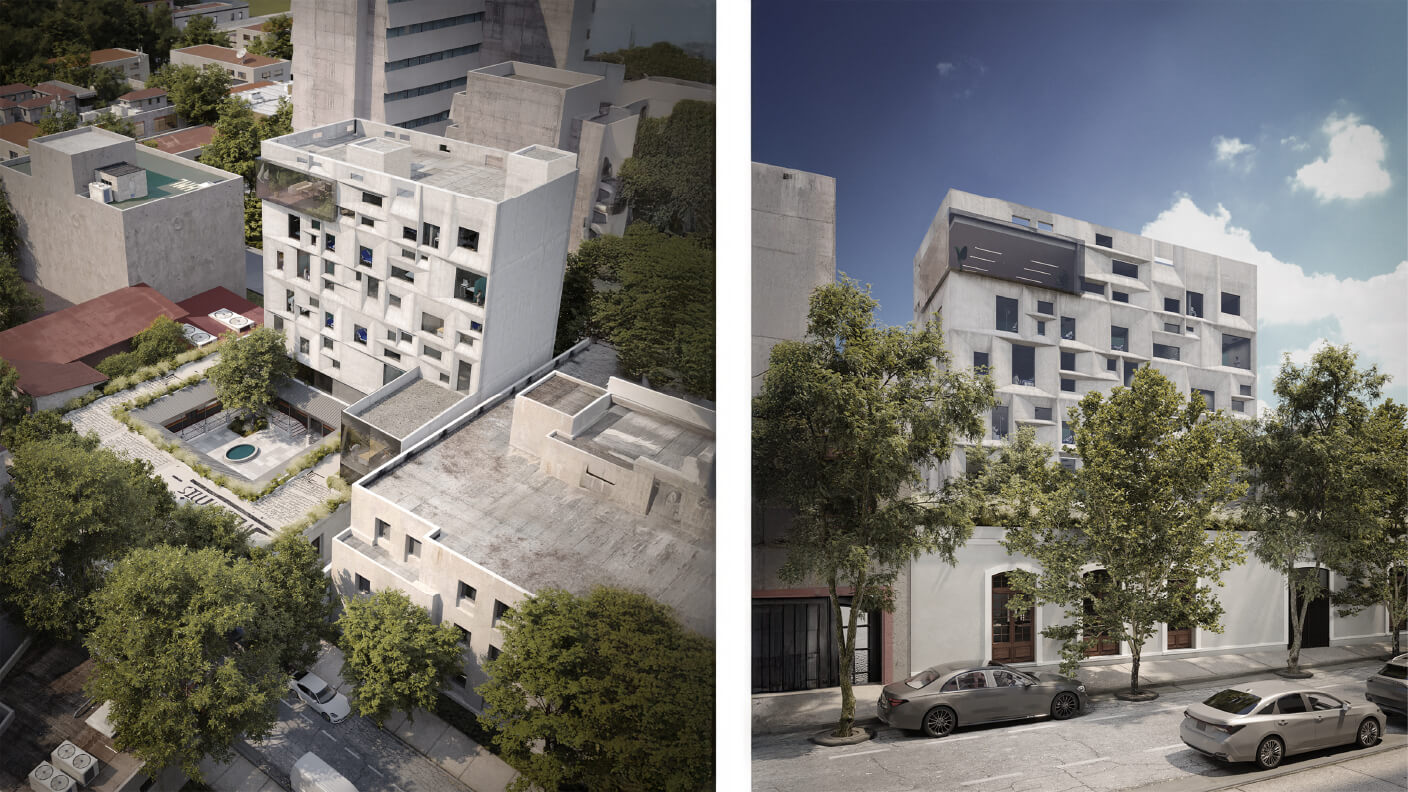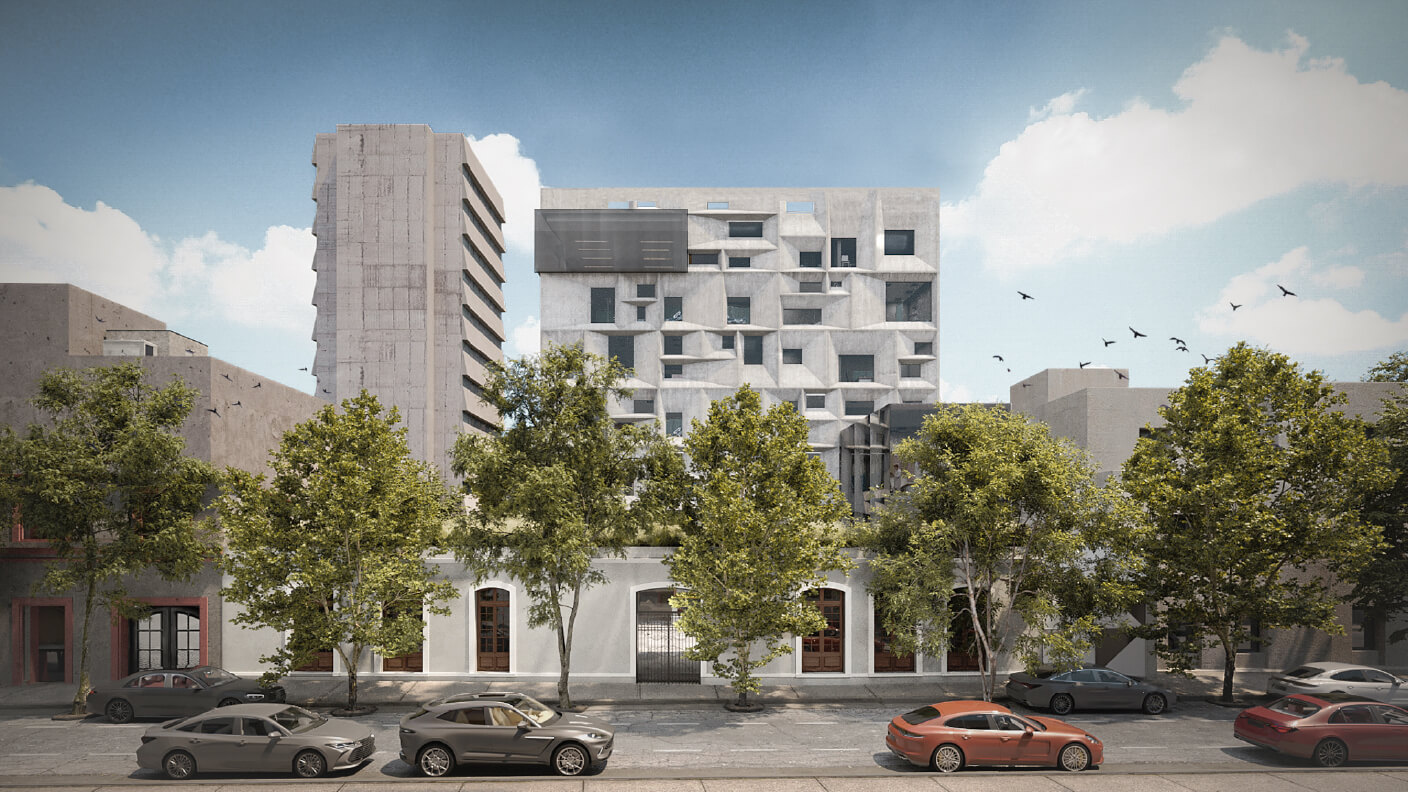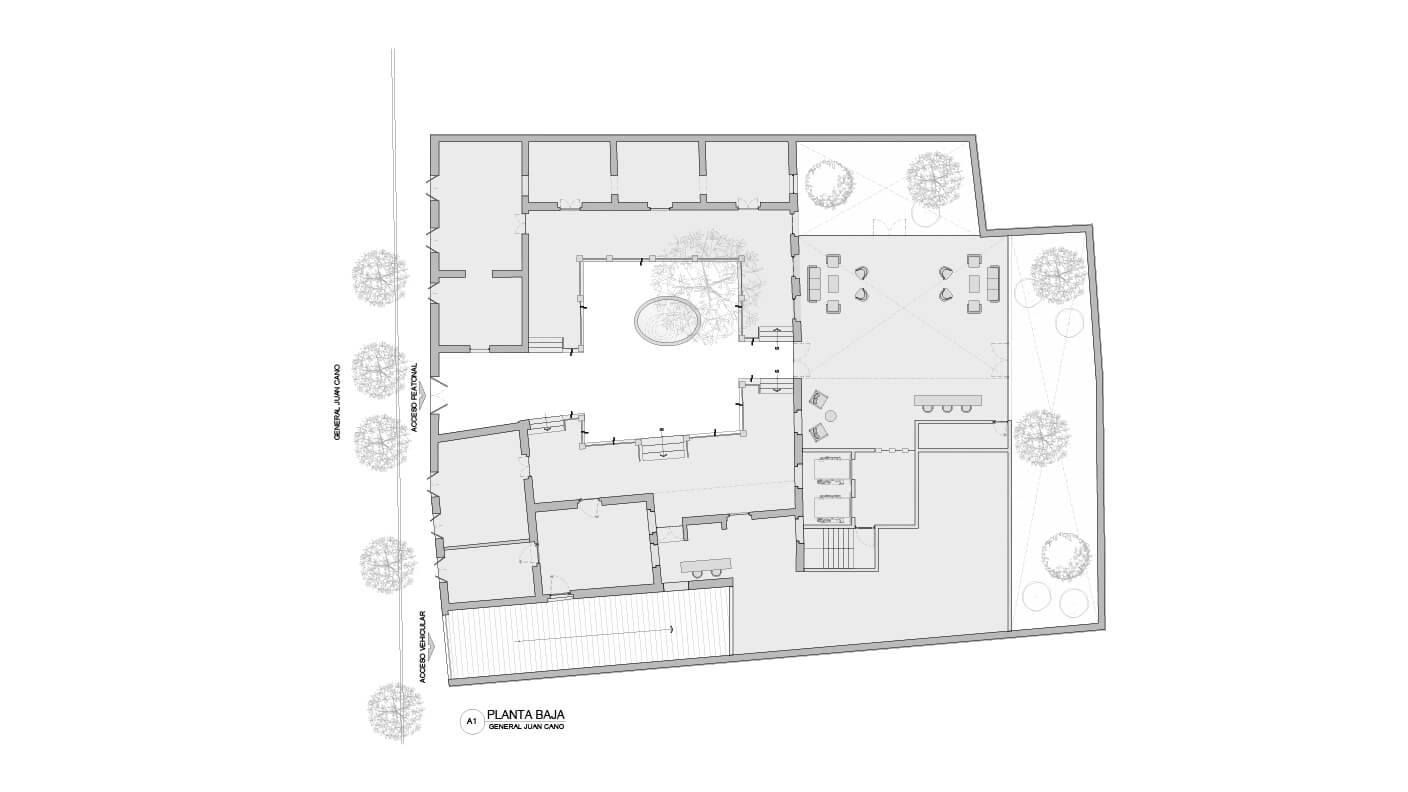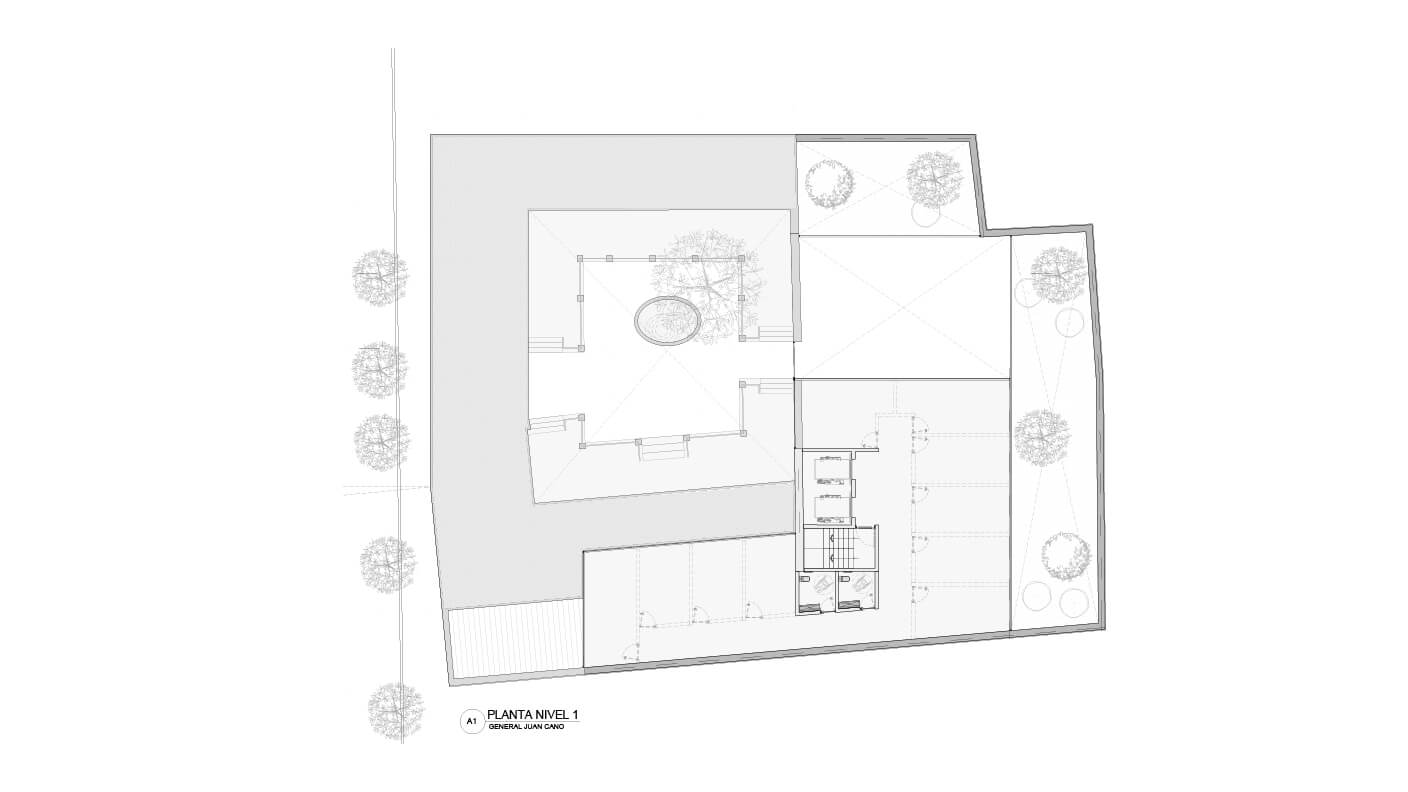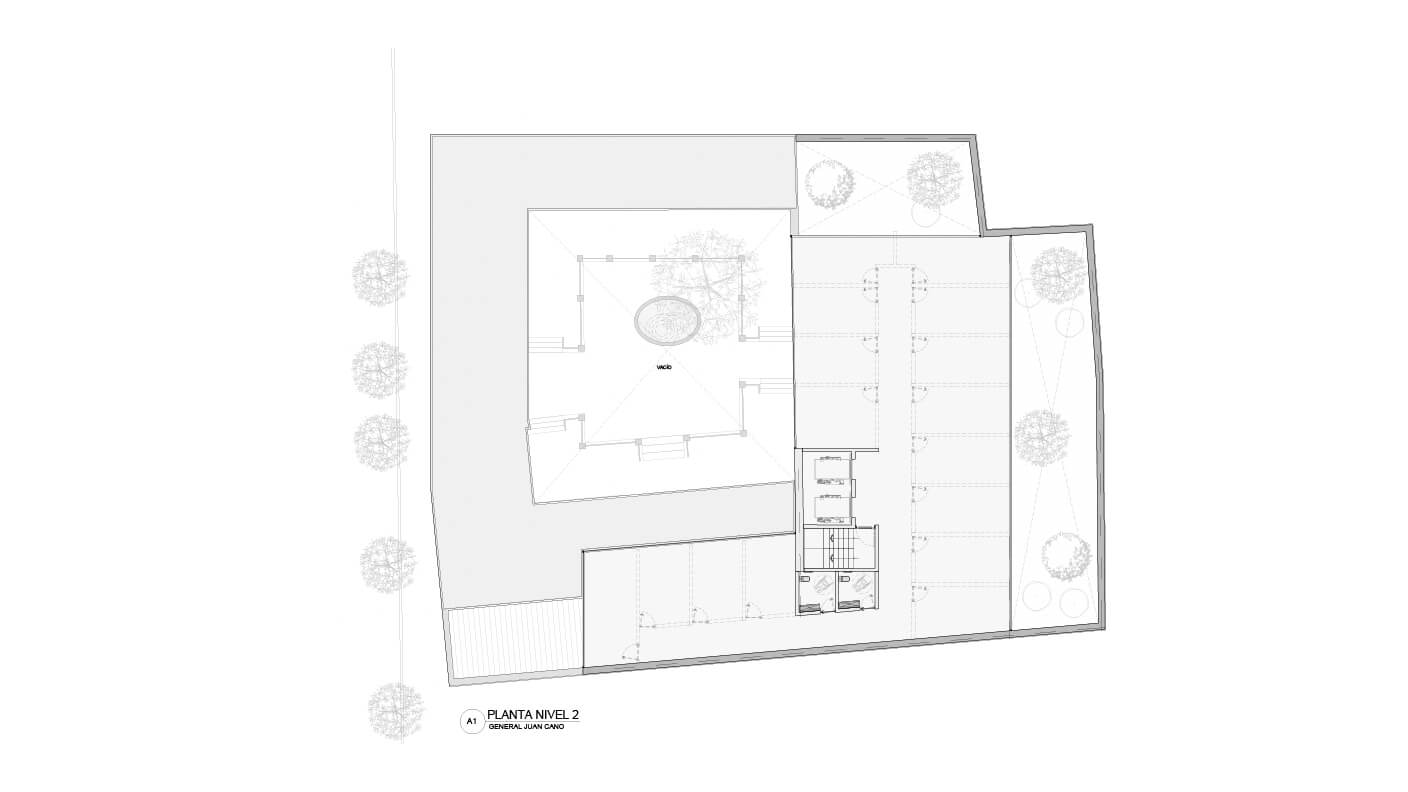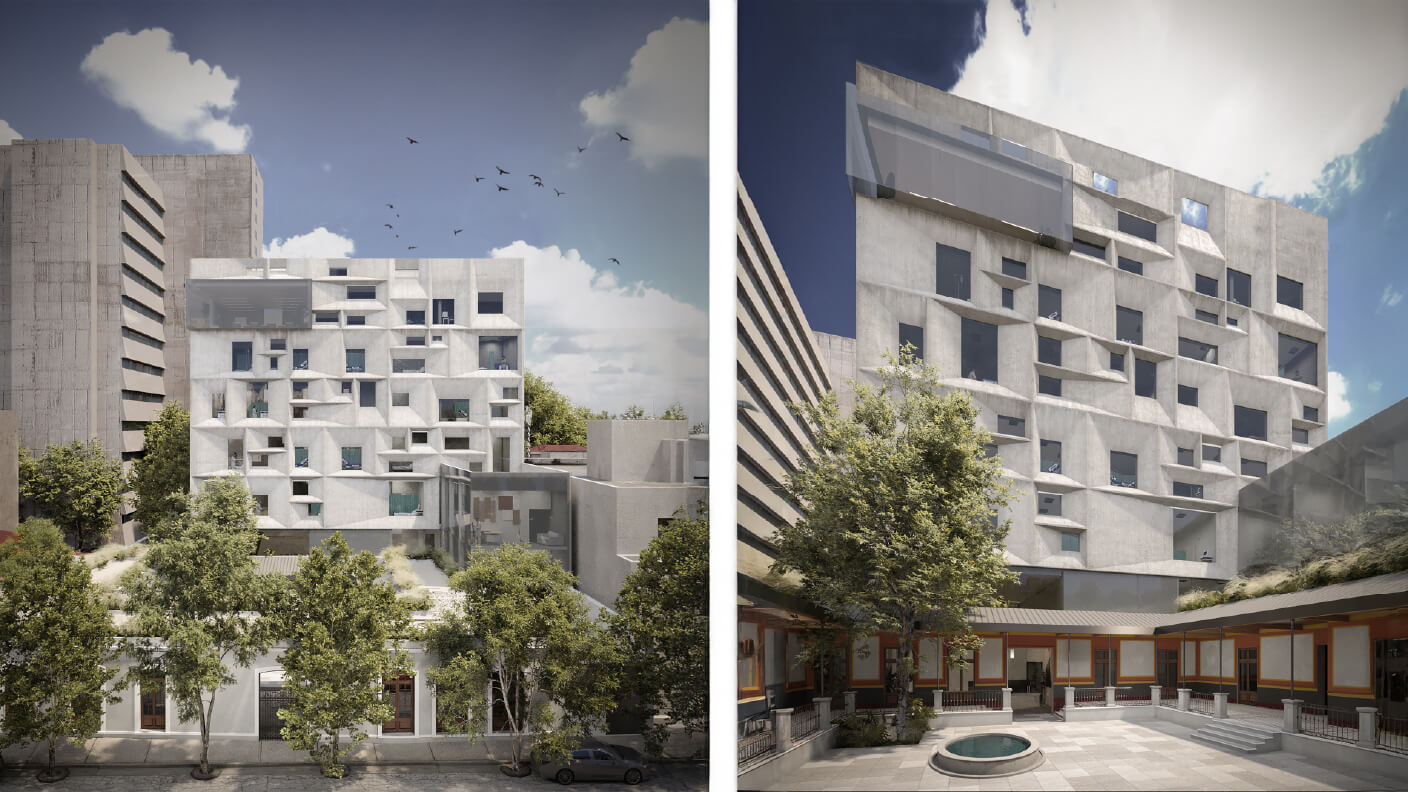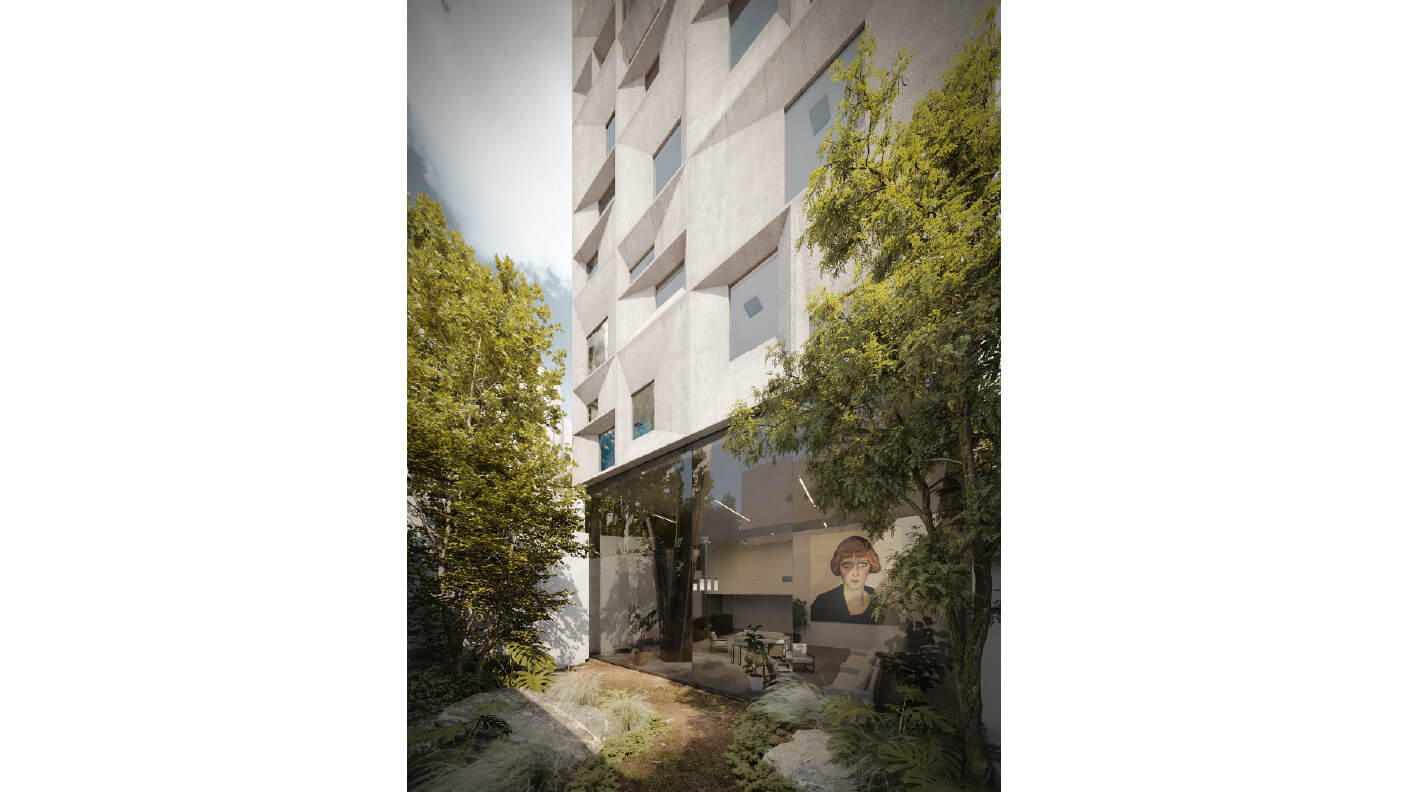General Juan Cano
This project proposes the rehabilitation of a historical heritage in direct connection with its cultural context. The house of Nahui Olin, a recognized surrealist artist, becomes the central axis for the development of a mixed-use tower, aimed at meeting the growing demand for medical services in the San Miguel Chapultepec neighborhood. The intervention is conceived as an opportunity to redeem and reinterpret this architectural legacy, transforming it into a real estate business model.
The project consists of a mixed-use medical tower: on the ground floor, an access patio functions as a lobby, while the upper floors house offices, clinics, and outpatient surgical rooms. This allows for a seamless integration between the reception area and the medical care spaces, inviting users to socialize and engage with an environment designed for their well-being.
In the rear, the buildable area is maximized while respecting regulations and the integrity of the restored house, ensuring an increase in levels and square meters without compromising the heritage. The structure of the tower, composed of reinforced concrete and a facade made of precast concrete pieces, contrasts with the original materials of the house, maintaining the essence of the place.
This unique building defines and respects the legacy of Nahui Olin, creating a dialogue between the old and the contemporary. The facade, designed as a reminder of her paintings and artistic works, expresses itself through a play of openings that evoke eyes, a recurring symbol representing both the inner vision and the connection to the outside world in her work. This design not only pays homage to her oeuvre but also narrates the evolution of the heritage, establishing a deep connection with the cultural history of the area.
From the outset, the project aimed to be more than a simple addition; it sought to integrate harmoniously into its surroundings. Innovation and respect for the past intertwine, demonstrating that real estate development can be sustainable and attractive without sacrificing historical value.
Thus, through a constructive approach that merges tradition and modernity, a functional and meaningful space is created that honors the legacy of Nahui Olin while responding to the needs of the community.

